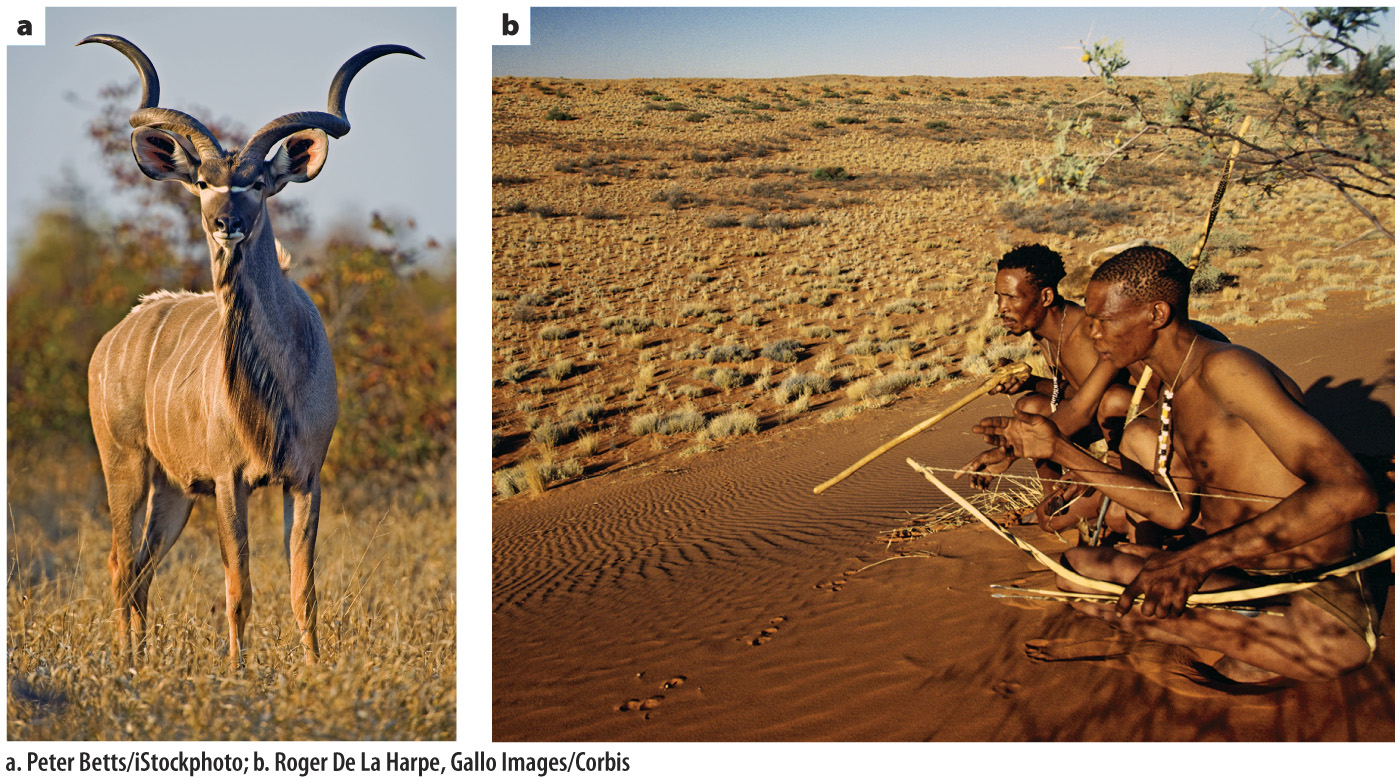CASE 7 PREDATOR–
Can the loss of water and electrolytes in exercise be exploited as a strategy to hunt prey?
As we have seen, exercise can lead to loss of water and electrolytes, a response that is exploited by African bushmen as they hunt large prey. African bushmen are hunter-

Before hunting, bushmen drink as much water as possible, hydrating their bodies. They select a large prey animal, which they chase from a shaded refuge into the open sun when temperatures exceed the animal’s core body temperature. The bushmen can deal with the high temperatures, cooling their bodies through sweating, but because they hydrated thoroughly before the hunt, their sweating does not dehydrate them. Not so for the prey. The bushmen hunters track and chase their prey until the prey becomes dehydrated and hyperthermic, thus rendered unable to escape.
Even if the bushmen hunters strike the animal successfully with a poisoned arrow, they still must track it for long distances and over long periods of time. Hunts typically last several hours, but sometimes as much as 1 or 2 days, and cover distances of 25 km (about 16 miles) or more. The loss of water in intensive heat disrupts the animal’s water and electrolyte balance and thus contributes to its inability to move and defend itself.